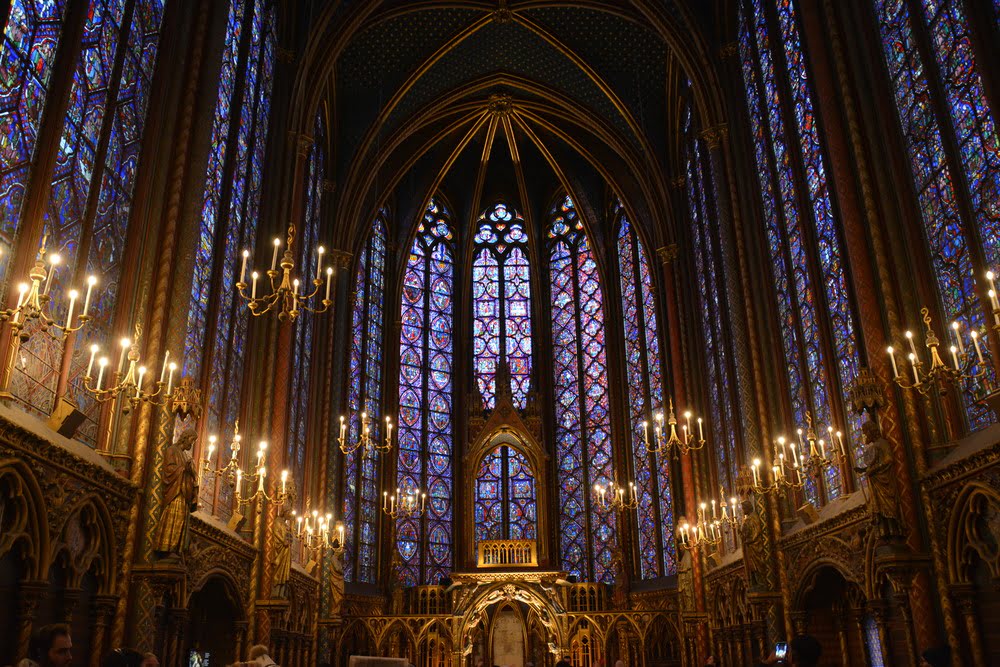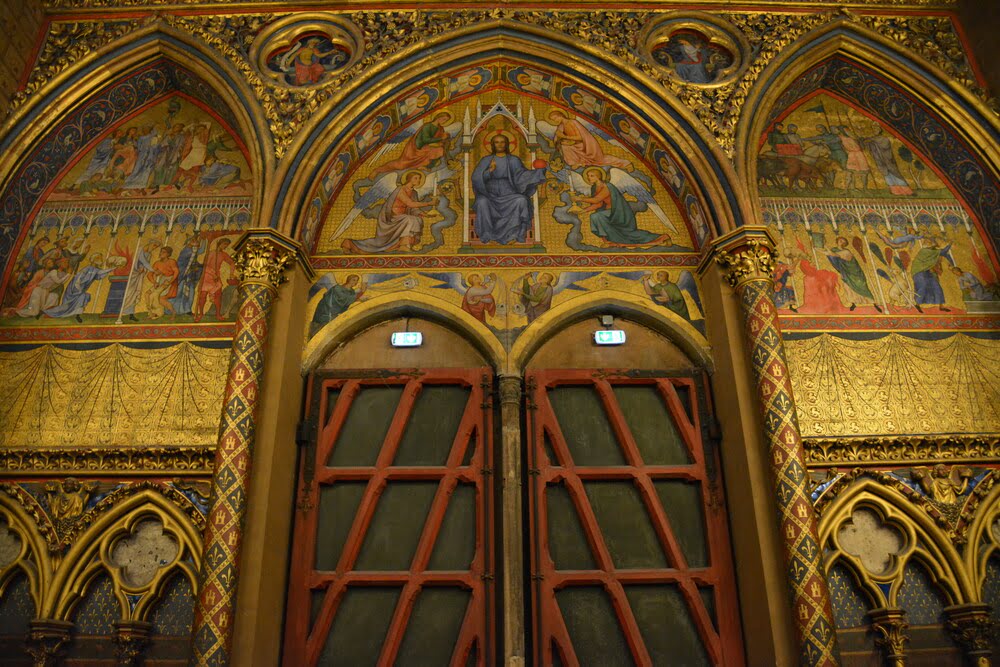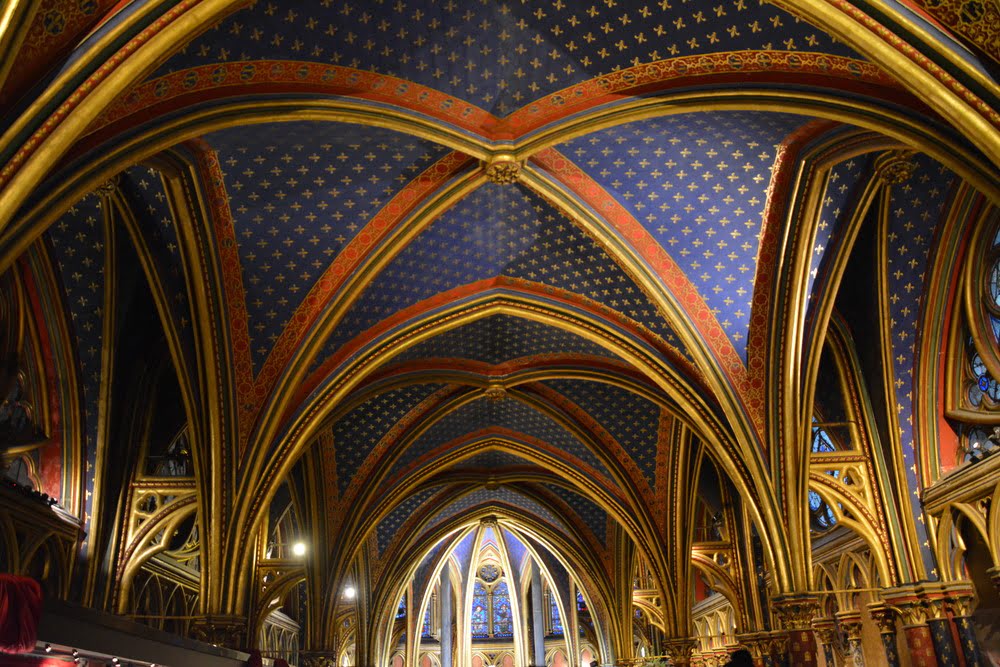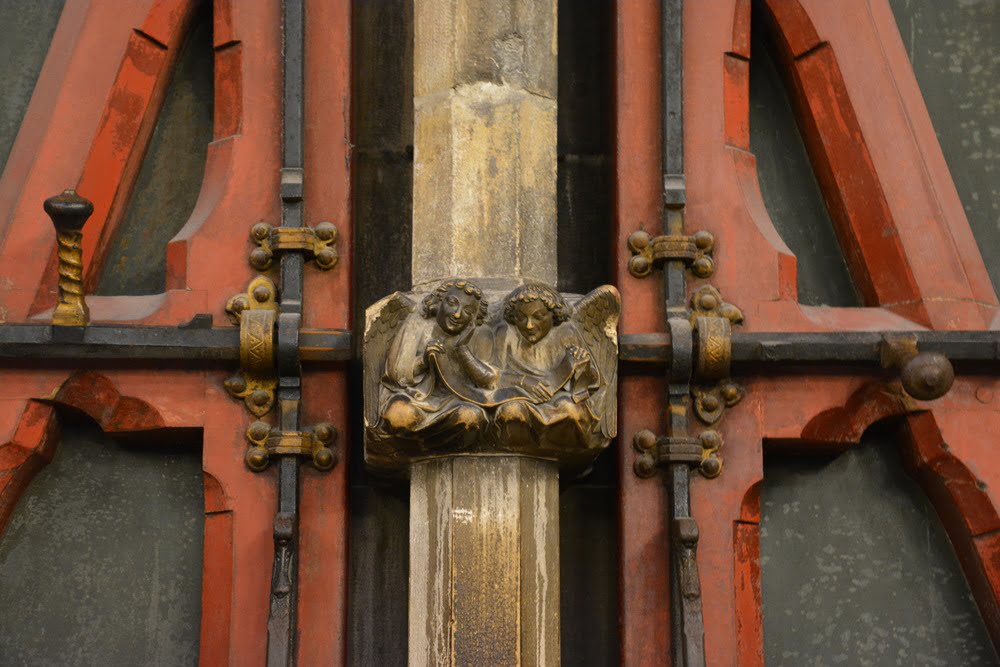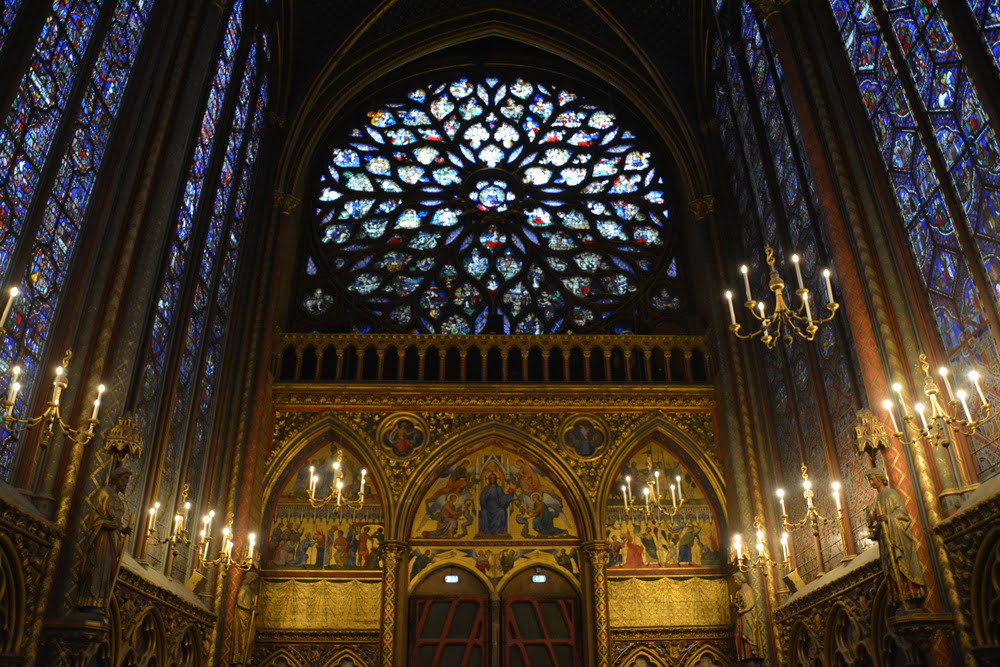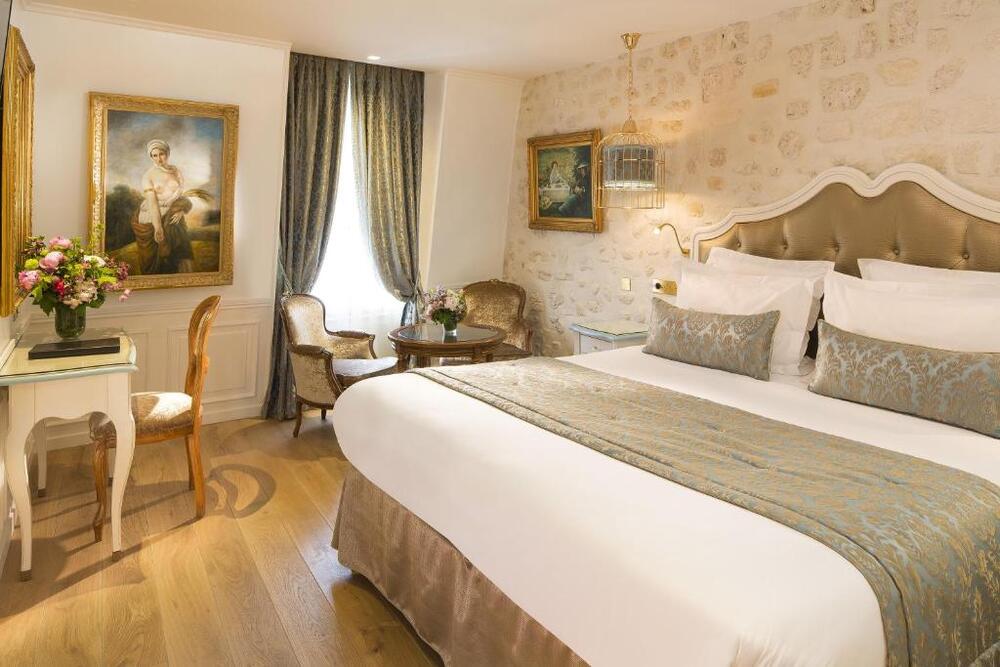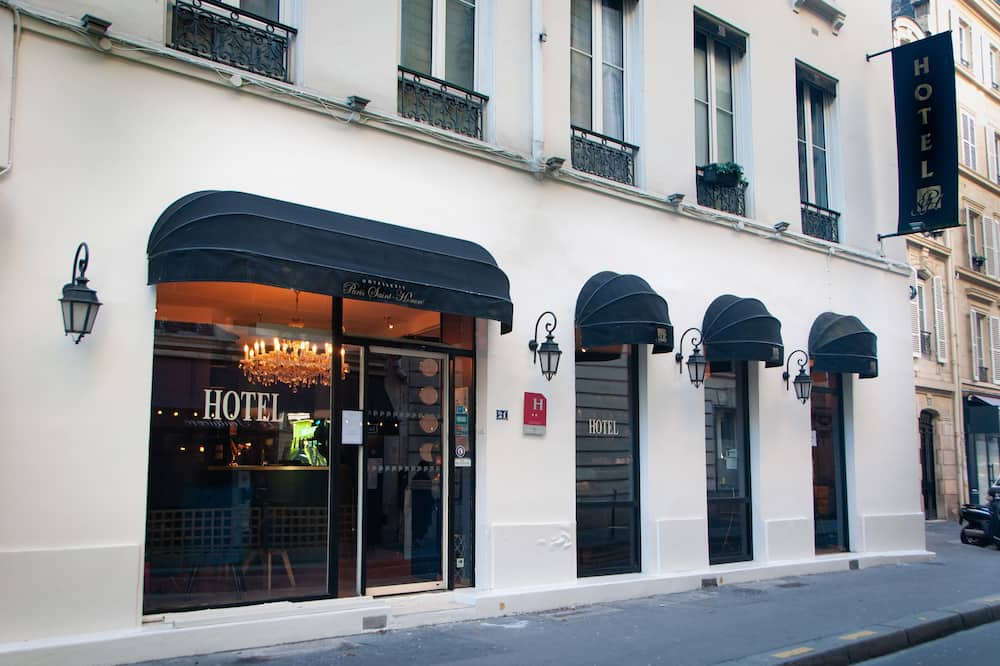Built in 6 years, the Sainte-Chapelle is mostly the personal work of Saint-Louis.
The Sainte Chapelle enclosed into the structure of the Palais de la Cité stood both as a religious and a political symbol reflecting the double function of the king, both a temporal and a spiritual leader. Not only a palatine chapel (higher chapel for the king and a lower chapel for the public) but first of all a reliquary chapel of the most daring gothic architecture offering an airy cage of light to the holy relics. The upper chapel, which is reached from a staircase in the lower chapel, is Gothic architecture at its most daring and successful : an airy cage of light whose slender columns seem to extend towards the vault.
The Sainte Chapelle was originally built for the collection of relics of Louis IX. His collection was purchased at extortionate rates from the bankrupt empire of Byzantium. This including the Crown of Thorns which he had acquired in 1239 from the Emperor of Constantinople. The cost of the collection exceeded the cost of the chapel.
Design
To begin with, the interior of the upper section is often described as a jewel box, with its brilliance and its saturation of colours of the stained glass and the exquisite perfection of its Gothic architecture. The glass is amongst the oldest in Paris and dates from the thirteenth century : many biblical narratives from the Old and New Testaments can be identified. Today, these relics are housed in the Treasury at Notre-Dame.
La Conciergerie
Until the second half of the XIVth century the history of the Conciergerie is intertwined with that of the Palais de la Cite as a whole. When king Charles V moved his residence to the Hotel Saint-Pol, he left the administrative bodies in place (Parliament, Chancery, Audit office) and appointed a concierge (keeper), hence the name Conciergerie applied to the residence of this important officer of the Crown, in effect the king’s steward, endowed with power and privileges. These were the beginnings of the Conciergerie prison.
After the fall of the monarchy, the Tribunal revolutionnaire, created by the Convention in 1793, took over the prison. The dreaded Fouquier-Tinville was its public prosecutor. Over a two-year period, more than 2,700 people sentenced to death spent their last moments in the Conciergerie : many unknowns, alongside a few aristocrats, scientists, men of letters…
The most famous prisoners were queen Marie-Antoinette, the poet André Chénier, the 21 Girondins, members of the Convention found guilty of conspiring against the Republic and Robespierre, the architect of the Reign of Terror…
The XIXth century also saw many prisoners, among whom the royalist general Cadoudal, field-marshal Ney, the future Napoléon III, and the anarchists Orsini and Ravachol…
In 1914 the Conciergerie ceased to be a prison it was declared a national historic monument and opened to the public.
Location : 10 Boulevard du Palais 75001 Paris
Phone : 01 53 40 60 80
How to get there :
- Métro, lines 1 and 4: Cité, Châtelet, Saint-Michel
- RER B : Saint-Michel
- Bus: 38
Opening :
- November to March: 9am to 5pm.
- April to October: 9am to 6pm.
- Closed on Monday
Official website : https://www.sainte-chapelle.fr

